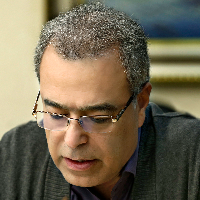Development of a theoretical model of urban space production in Abbasabad lands of Tehran , Emphasizing the power relations of actors Based on Grand Theory (using Atlasti qualitative analysis software)
Author(s):
Article Type:
Research/Original Article (دارای رتبه معتبر)
Abstract:
How to produce urban spaces and discover what has happened in this process over time makes the type of space production transparent and allows for better planning and management and filling gaps through existing potentials.The purpose of this study is to present a model of urban space production of Abbasabad lands of Tehran metropolis with a magnifying glass of actors and current power relations between them.The methodological approach of this research is qualitative approach. The sampling method is based on the chain method. In order to increase the reliability of quality data, a period of twelve months and individuals in three different executive, scientific and scientific-executive areas related to the production of Abbasabad space were collected. Responsive validation technique has also been used to increase the reliability of quality data. The innovation of this research is the development of a theoretical model of producing a unique urban space with grounded theory and qualitative analysis with Atlasti software.Findings show that the algorithm or model of presence, position and relationships of urbanspace production actors in Abbasabad lands, in a linear-hierarchical manner between government institutions (including government and government institutions and urban management) And the private sector under the banner of the public sector is underway. In the production of this space, there was no mechanism for citizen participation and under the fundamental influence of the system of governance of urban management , the multiplicity of responsible and decision-making institutions and the invasion of interests by various groups in government and governance has led to the prevention of citizens' right to the city which can only be solved by creating integrated management and unit ownership.
Keywords:
Language:
Persian
Published:
Research and Urban Planning, Volume:14 Issue: 52, 2023
Pages:
17 to 36
https://www.magiran.com/p2590207
سامانه نویسندگان
اطلاعات نویسنده(گان) توسط ایشان ثبت و تکمیل شدهاست. برای مشاهده مشخصات و فهرست همه مطالب، صفحه رزومه را ببینید.
مقالات دیگری از این نویسنده (گان)
-
The Role Of Interactive Planning In Today's Urban Planning Field As Perceived By Professionals
Shadi Shokri Yazdanabad, *
Naqshejahan- Basic studies and New Technologies of Architecture and Planning, -
A Meta-Analysis of Housing Satisfaction in Mehr Housing Project according to Housing General Policies
Somayyeh Haghroosta, *, Esfandiar Zebardast
Quarterly Journal of The Macro and Strategic Policies, -
Explaining the impacts of the rational development of the city on the realization of a slow city (a case study of Qazvin city)
Fatemeh Asadollah Sharifi, Seyyed Mohammad Reza Khatibi *, Jamaleddin Soheili
Journal of Life Space, -
Investigating the spatial-spatial organizing strategies of informal settlements(Case study: Murad Ab Karaj hill)
Seyed Ali Sharifi, Keramatolah Zeyari *, Mohammdreza Khatibi
Journal of safe city,



